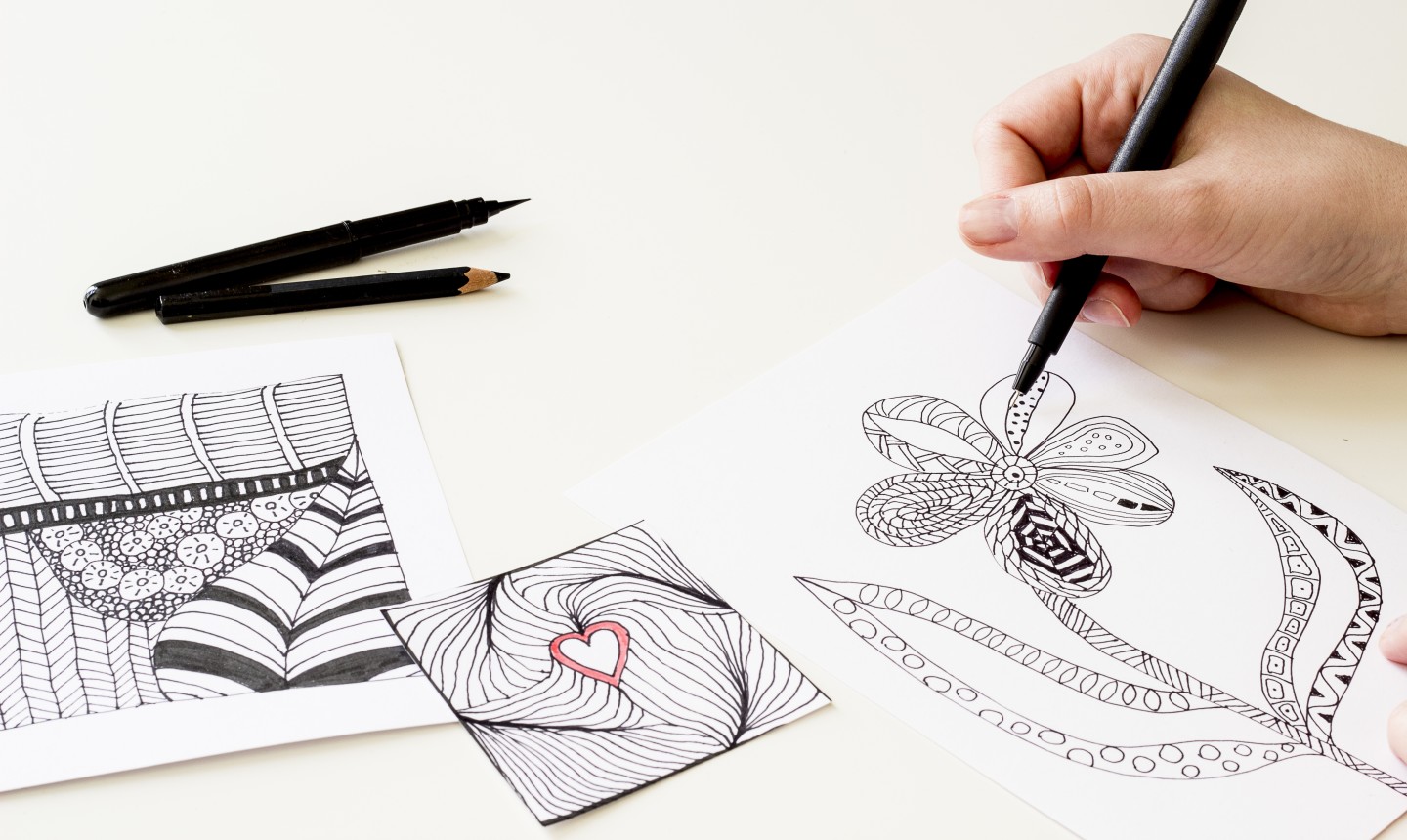
Walking into an art-supply store and buying ALL the things is pretty exciting. But if you're drawing in pen and ink, all you need are a couple of basic supplies. Here's what to think about before you shop.
Choosing a Pen
Key question: What kind of pen do you want to use? You'll find tons on the market, so get to know the basic varieties first so you can decide which type (or types) to pick out of the crowd.
Dip or Nib Pens

Dip or nib pens have a steel nib attached to a handle that can be made out of almost any material. The steel nib is split down the middle, creating an ink channel. Once you dip the nib in ink and bring it into contact with the writing surface, the ink flows down the channel, leaving a consistent and easily controllable line.
By putting more or less pressure on the nib, you can control the width of the channel — which then controls the width of the line. Dip pens work so much better than reed pens, thanks to their durable steel nib and the fine line control they give you.
Fountain Pens
When you're using a fountain pen, you can make a continuous line without stopping to reload the ink on the nib. That's because fountain pens have an internal reservoir of ink, usually a refillable cartridge. But fountain pens have a steel nib, too, which makes them different from most pens.
The best thing about fountain pens is that you can carry them anywhere you go, without also having to tote around a bottle of ink. Using a fountain pen also makes it harder to mess up your ink drawing with a nasty ink splash (oops). But that's not to say accidents won't happen at all. They will. Just not all that often.
Artist Pens
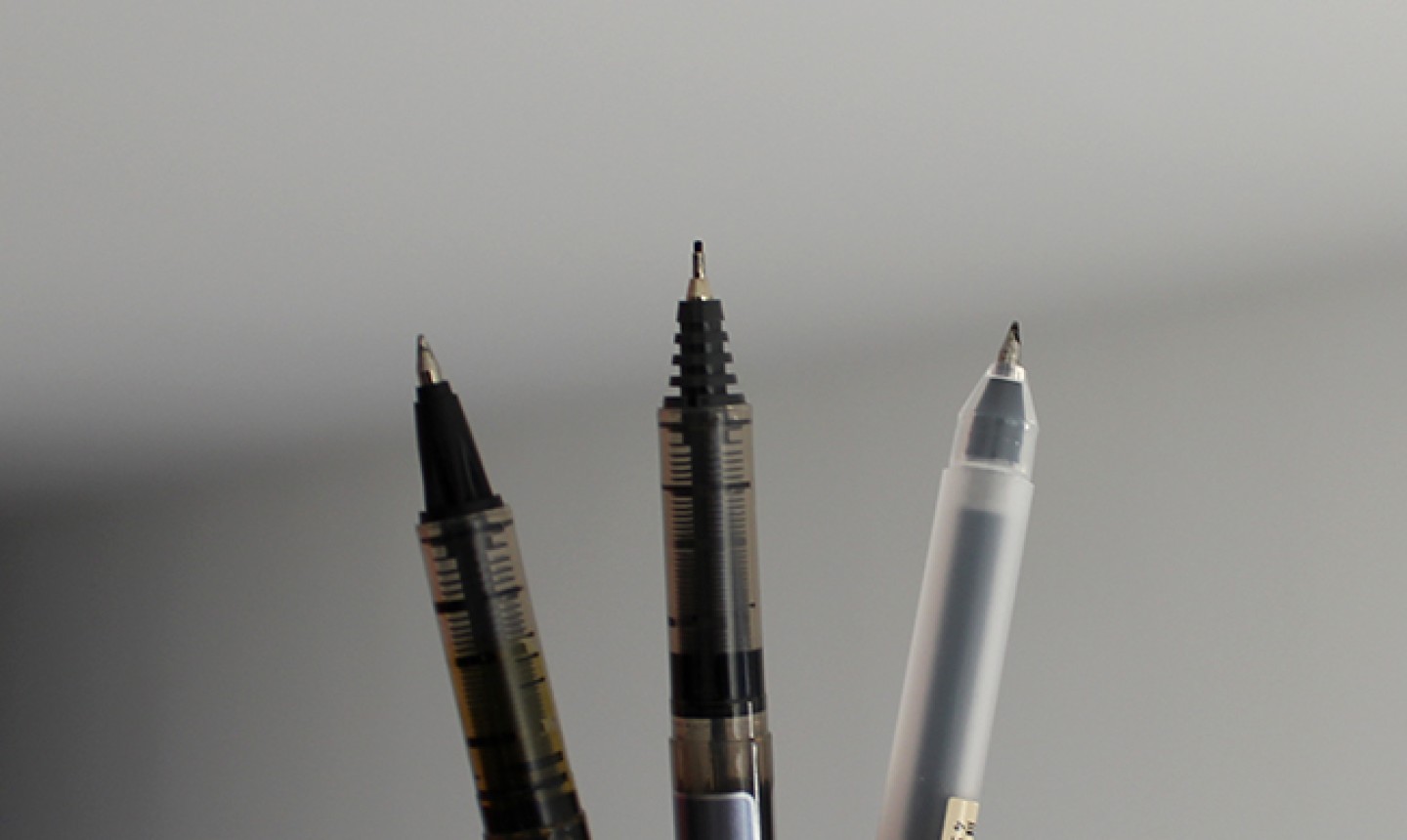
You can find all kinds of pens that fall somewhere between your everyday office pen and a fountain pen. These pens typically have a reservoir of high-quality ink but don’t necessarily use a steel nib for the tip.
You can also choose from a range of tip sizes (from 0.03 to 0.8 millimeters) and materials (felt, fiber or rollerballs). Basically, you're looking at nearly endless combinations of size, tip type, brand, ink quality and more. Play around with the options to figure out what works for you.
Ballpoint Pens

Don't sleep on the ballpoint pen! Yes, this basic pen is everywhere, but that doesn't mean it's ho-hum. This standard office supply is the humble hero behind all kinds of amazing drawings. Here's another reason to try it: You can layer ballpoint pen ink to build depth and three-dimensional form, which you can't do with most other types.
Taking Your Pen for a Test Drive
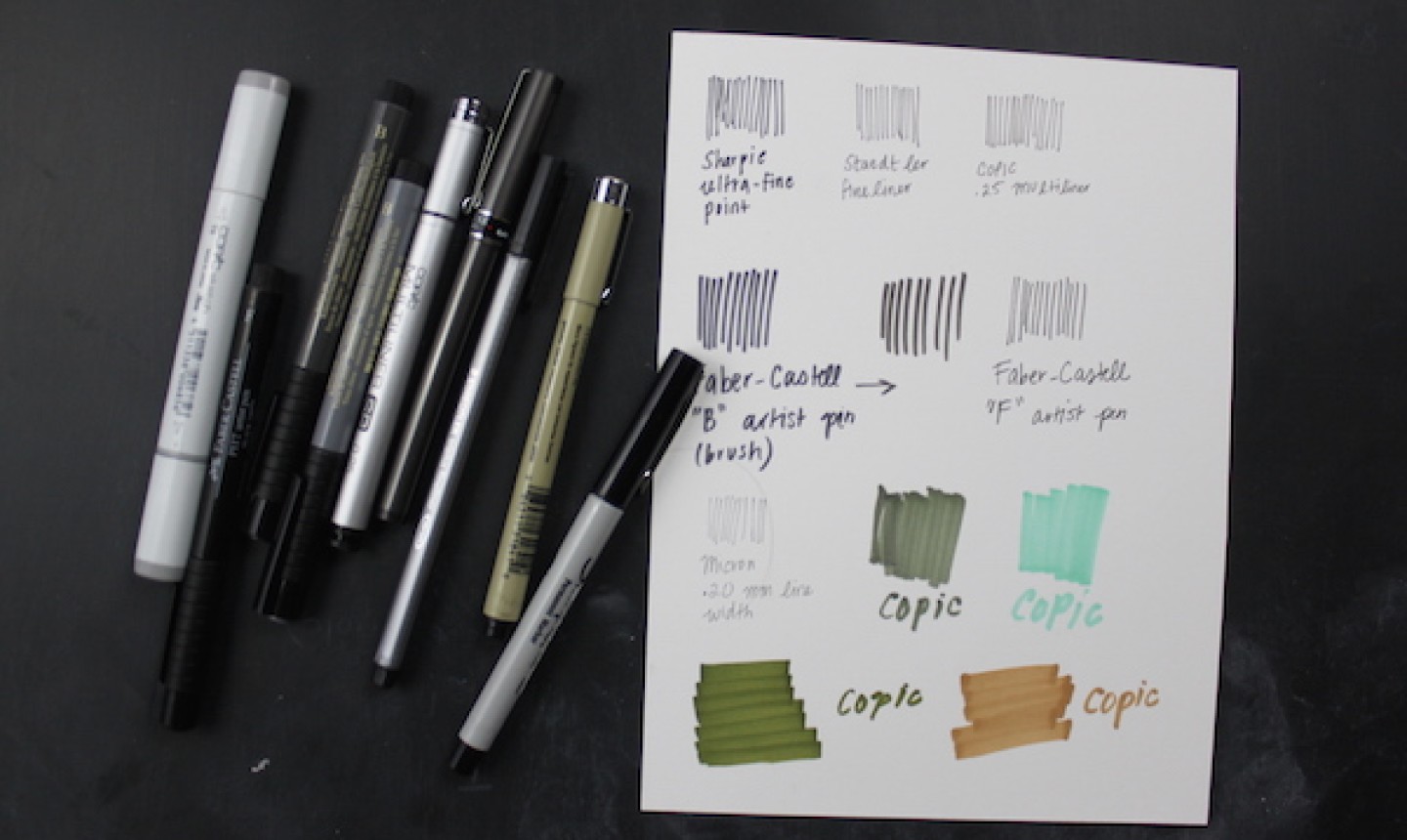
Before you really start drawing, make a “chart” on a scrap piece of paper. You can use that to get a sense of the types of lines your pen (or any pen) will make. A few quick marks will give you an idea.
Think about whether you like the look of the lines your pen made, and how it feels to hold the pen. Do you prefer the thick tip of a Copic marker or the ultra-fine point of .20 millimeter Micron? There’s no right or wrong; it all depends on your personal drawing style.
Picking the Right Paper
Pen and ink get along with lots of different types of paper. But the specific project you're doing might need a certain kind of paper, so definitely consider what you intend to do before you jump in.
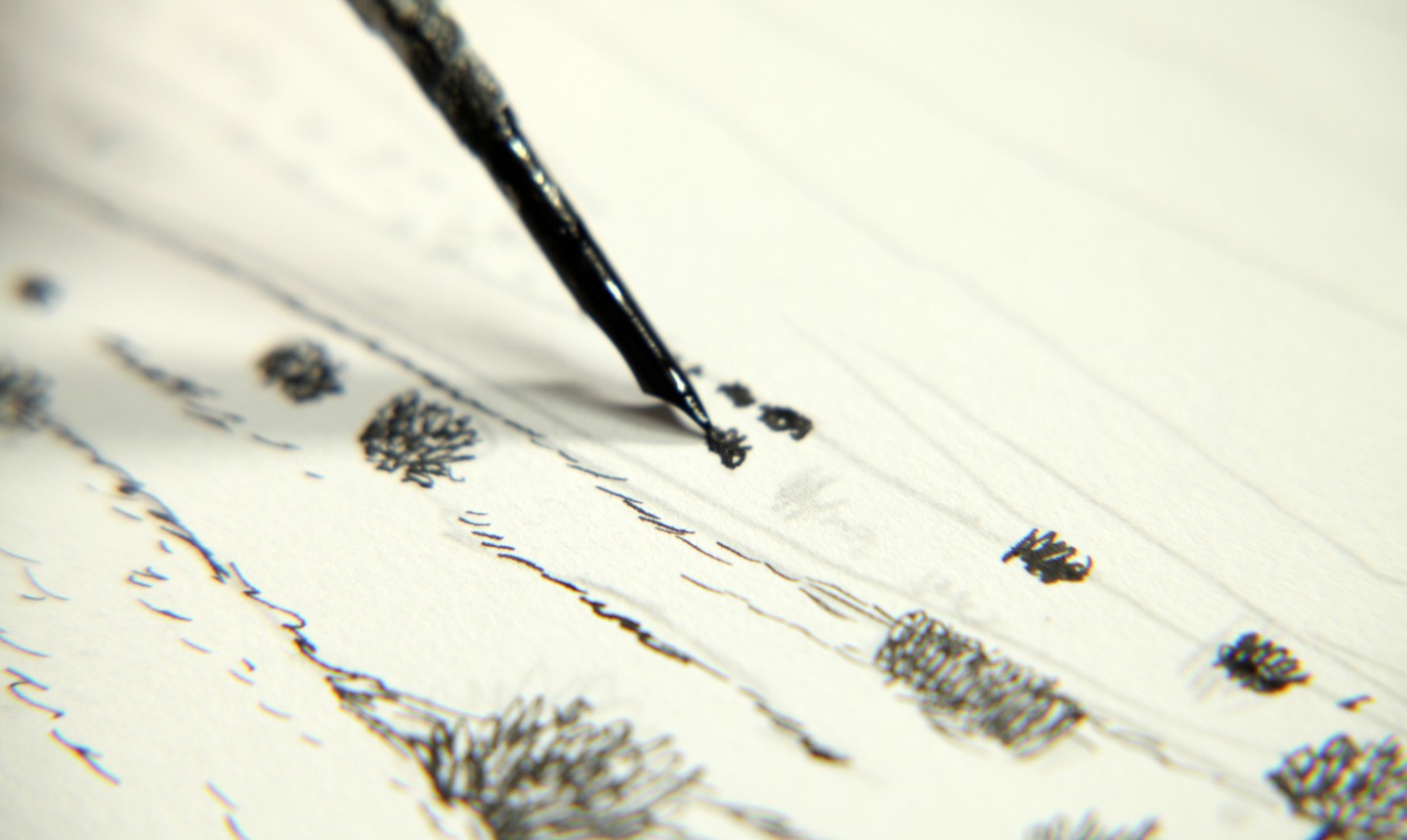
For example, you may love the look of watercolor paper, but it's best to stay away if you’re using a quill pen. The paper can snag, break the tip of your pen and mess up your drawing. On the flip side, drawing paper may look fine for the pen and ink part, but it won't work as well if you decide to add watercolor: The non-porous paper will keep the paint from spreading the right way.
So what should you choose? For pen and ink work, you generally can't go wrong with bristol board or illustration board. Both kinds are fairly flat, so they won't tear up the tip of your pen. They'll also keep your image looking crisp. And since they're both absorbent papers, they're ideal for watercolor, marker and acrylic too — so don't be afraid to mix.
Shopping for Ink
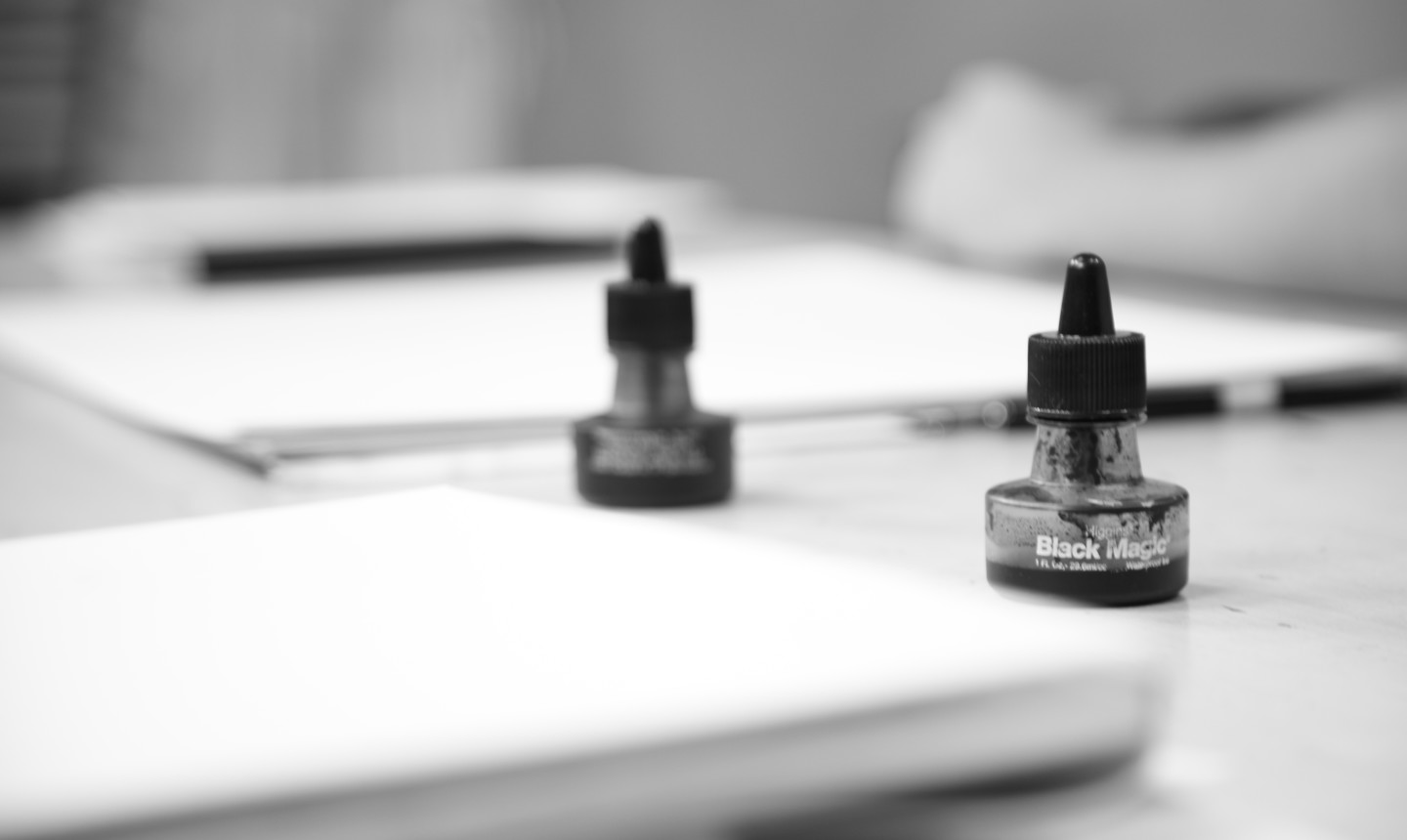
If you decide to use a dip pen, don't forget to pick up some ink too. Starting with black ink is the way to go if you're a beginner. Keep an eye out for Sumi ink when you're shopping: It has a super rich black tone.
Choosing a Paintbrush

When you're using a dip pen and ink, get yourself a paintbrush too; you might want to use one. (Later in this post, we’ll show you how to use a paintbrush in your pen and ink drawings.) The best paintbrush for the job is one that's meant for water-based media.
Working With a Pencil First
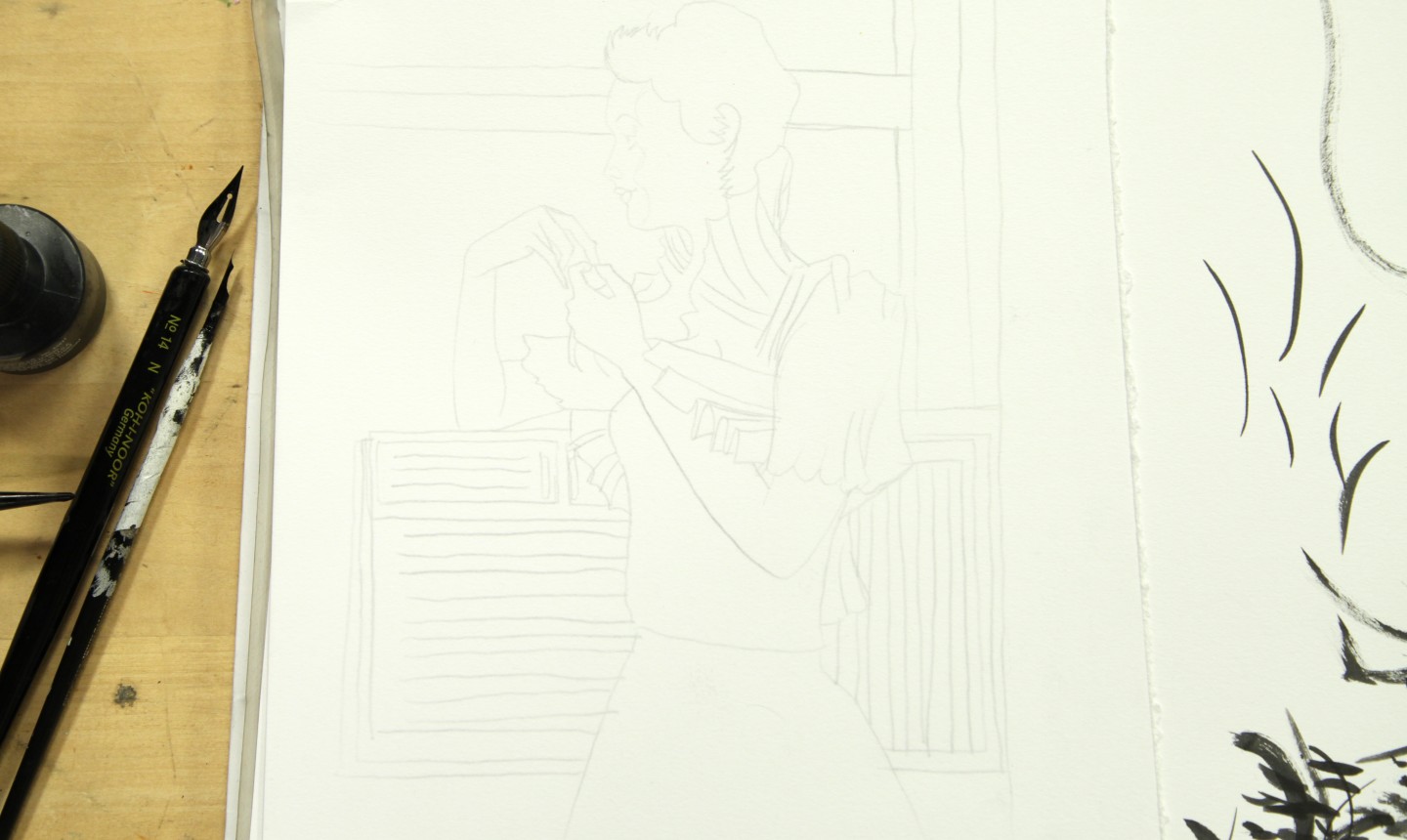
Why start with a pencil before you switch to ink? Simple: You can erase pencil, but with a pen you're stuck with your mistakes. Making a light sketch with a pencil before you add ink can help you get the composition, perspective and size just right. Plus, it's just a pencil, so chances are you already have one at home.
So get back to the store, pick up just what you need and begin exploring the incredible world of pen and ink. You're ready!

Share tips, start a discussion or ask other students a question. If you have a question for an expert, please click here.
Already a member?
No Responses to “Pen and Ink Drawing Supplies: Your Starter Set!”